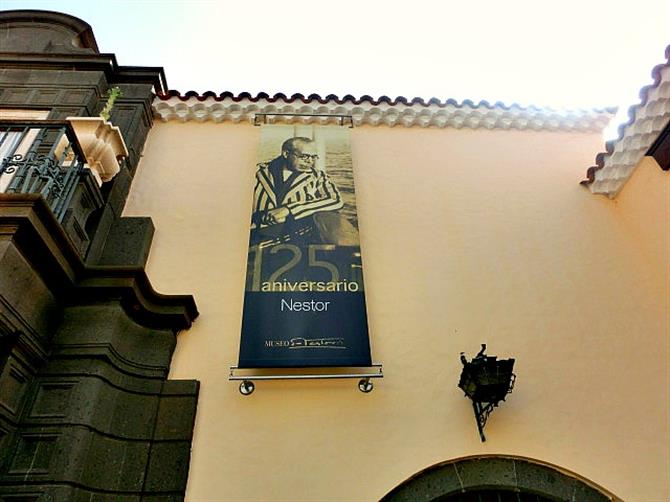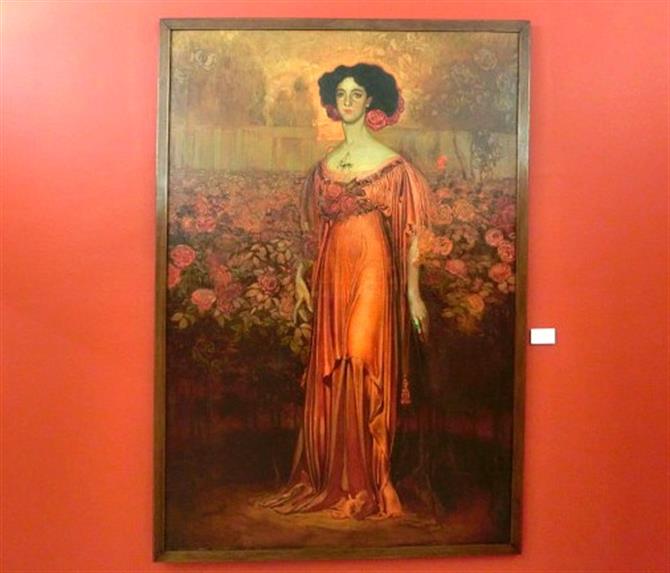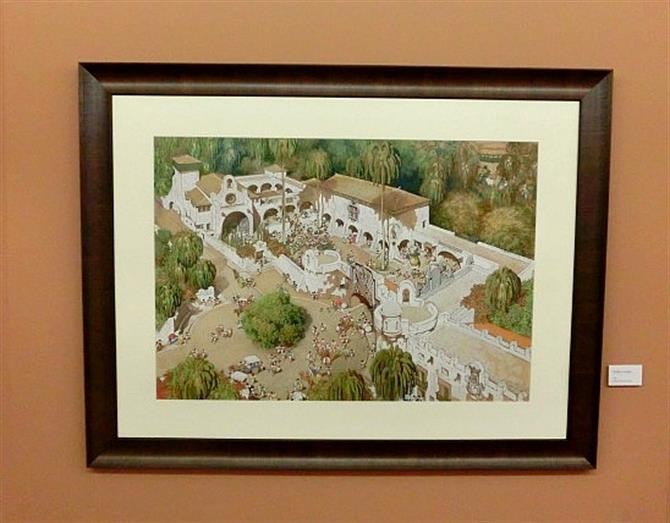There are bigger museums in Las Palmas de Gran Canaria, but the Pueblo Canario's Museo Néstor offers a short yet sweet treat for all you culture vultures. Centrally located in the city, it's difficult to miss. Especially if you combine a visit here with a trip to the neighbouring Parque Doramas.
The life and times of Néstor Martín-Fernández de la Torre

Néstor Martín-Fernández de la Torre was born in Las Palmas de Gran Canaria on the 4th of May 1887. A prodigious talent from an early age, he created his first drawings at seven years old. And given the artist that he would become, these were no mere childish doodles.
Inside the museum, you'll be able to see 1900's Marina, a painting Néstor completed at just 13 years old. Then, his teacher was the seascape specialist, Elisha Meifrén i Roig. He'd later study under the likes of Rafael Hidalgo de Hidalgo de Cavides in Madrid, Paris and Barcelona. De la Torre also spent some time in Buenos Aires before returning to the city of his birth in 1934 where he died prematurely at the age of 50, on the 6th February of 1938.
The Néstor Museum

Whilst Néstor was still living, his dream was to house his back catalogue in Telde's historic San Francisco district. However, his death put paid to that. And so under the direction of his architect brother Miguel Martín-Fernández de la Torre, a museum was created within the walls of the emerging Pueblo Canario, although it wouldn't open until 18 years after Néstor drew his last breath.
The Museo Néstor celebrated its 50th anniversary in 2006. As well as drawings and paintings of de la Torre, you can see his paintbrushes and palettes along with jewellery and costumes he designed for Manuel de Falla's production of El Amor Brujo. It's open from Tuesday to Saturday 10:00am-8:00pm and on Sundays and public holidays from 10:30am to 2:30pm. Entry's a mere 50 centimes.
Néstor the modernist

Modernism is an artistic genre where realism is rejected along with the thinking of the Enlightenment. An industralized society didn't mean artists severed their links with their predecessors altogether, though. The past was there, ready to be subjected to both parody and revision.
One of the most striking paintings on show in the museum is on the museum's ground floor: La Hermana de las Rosas. This 1908 work of art is a simple idea, beautifully executed. The artist is hammering home the title which translates as Sister of Roses and so the model not only wears said flower in her hair and on her rose-coloured dress but also stands in front of a field of roses.
De la Torre, Gran Canaria's first ambassador for tourism

Néstor first began sketching designs for the Pueblo Canario in 1937 with the goal of recreating a traditional Canarian village in the centre of Gran Canaria. This tied in with his other later artwork, where de la Torre sought to capture a typical Gran Canaria on canvas. You'll find his visions of the Pueblo Canario on the first floor along with a related series of paintings which look like they're striving to be replicated on the pages of a holiday brochure.
